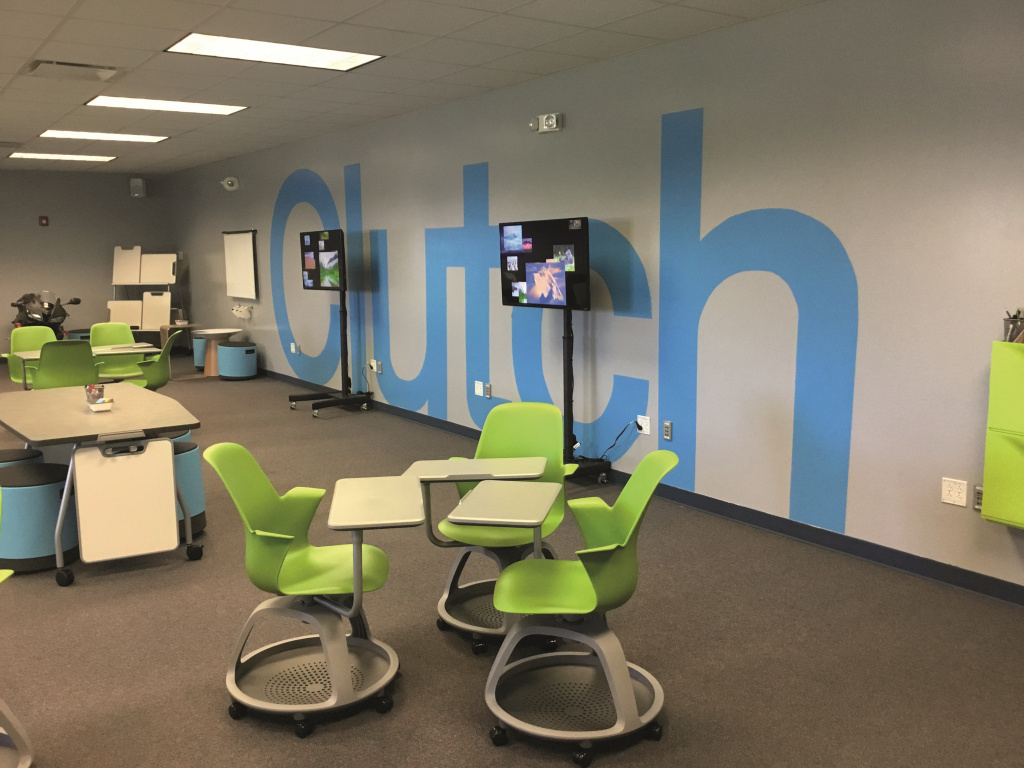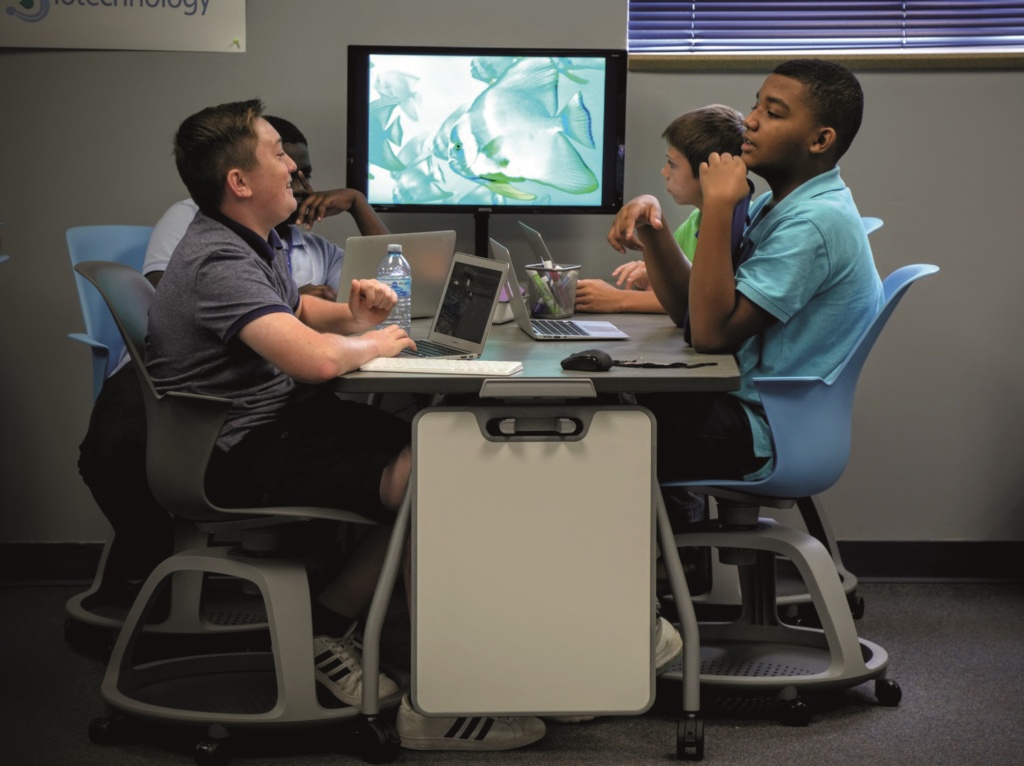“Close your eyes... Now imagine a learning environment that has been doused with technology, flexible, attractive learning solutions, bright colors, soft seating, standing desks, writable surfaces, shared screens, team-tailored curriculum and a superabundance of maker materials. Now open your eyes. Welcome to Clutch at Buddy Taylor Middle School. After years of planning, Clutch has finally infiltrated Flagler Schools, bringing with it the resilience and freedom needed to encourage students to learn how they feel and to do it collaboratively. Not only does Clutch look great, it’s adaptable, inspirational and productive - three very important qualities necessary for higher-order thinking and student achievement. But ask yourself, does a space like this, designed to cultivate greatness and bring forth ambition, apply only to students? Of course not. Clutch, similar to our other learning environments, is also used for district ProDev. The roles of teachers and students are changing, and so are their relationships. We need to motivate our faculty and staff and we need to ensure health and well being are present when opening new learning spaces. Can breaking tradition do this? We think so. What do you think?”

The above paragraph is an excerpt from “Flagler Schools Digital Learning Movement.” Flagler Schools Co. on iBooks and it outlines one of the prominent learning spaces that are being used by Flagler Schools stakeholders. It is an environment that consistently addresses collaboration skills while making available all the items necessary for innovative, explorative learning pedagogies resulting in a bombardment of sophisticated (sometimes) student lead projects. It also allows us, the builders, to observe the learning movement while making sure the space stays current and responsible. Technology, no doubt, plays a tremendous role in the education and the future of our students, surely, but there are other tools that will connectively work to enhance learning. The physical learning landscape - and we refuse to allow the learning environment to be a deterrent of productive learning. In fact, I think it’s safe to say that a dated, static learning space should be considered a learning disability.
Thanks to a half penny sales tax approved by county voters, Flagler is a very enriched technological school district, outfitted with industry-leading visual displays, 1:1 digital devices, audio enhancement solutions and maker hardware / software. It all sounds great on paper but more is needed for stakeholder success. Not only do you need these items, you need physical space that will empower and inspire your students while embracing a multitude of alternate learning styles and configurations. You also need a teaching and leadership staff that is colourful, adventurous and willing to relinquish a traditional mindset. Our observations have lead us to the conclusion that accessible technology, flexible learning environments and excellent teaching methods are the perfect symphony for the perfect day of learning. Natural light also helps… It’s a very interesting journey and most definitely requires support from all sorts of people but the payoff in the end will change the way you feel about education. It may also make you look forward to coming to work everyday!

Our journey was unique and I think that’s why we’ve been so successful, minus a couple of setbacks which we are happy to share. First, a bit about where our inspiration came. During a site tour one summer we were able to visit Stanford University in California. While in session, we had to stop for a minute to seriously admire the learning space we were in. It was impressive. Very impressive. Something we would expect to see at a prestigious learning institution, and it had us thinking - why wasn’t there anything similar to this being offered to our students in public education? We want them to stay inspired and we want to continually enhance learning and an environment like this would surely do the trick. We gathered as much information as we could and began researching learning spaces upon our return. It was then that we had our “a-ha” moment. Using some tips we learned offsite, we began to really observe our students and our teachers - in some cases, video recording the day and rewatching later as a team. We watched how the lessons were delivered and kept an eye out for curriculum dictatorship - and it was very apparent. The classroom furniture was dictating the direction of the lesson - and hindering it. We observed students who were sitting in the back unable to track the lesson as well as the inability to break into small groups simply because the learning solutions were fixed - and if they did break into small groups, the existing furniture remained in place, severely decreasing the learning per square footage. We even noticed the traditional barrier between students and the teacher - the infamous teacher desk. And there were entire walls littered with dated student work and posters, serving no real purpose. These observations were hard to swallow but the realization of what had to be done was simple: we needed to create a learning space that positively changes the day and not just for students, but for all involved.
A common mistake made, that we’ve observed, amongst districts is the need to build the environment around testing; a layout designed for individuality and solitude - but what do you do with it for the rest of the year?